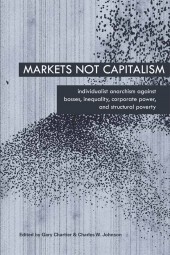Often, libertarians work towards their goals by campaigning for politicians and ballot measures that promise to enact them. Agorists work towards their goals by working towards their goals.
Agorism is libertarian politics beyond policy.
It’s the familiar focus on individual liberation, respect for persons and their property rights, the market process, and the self-organizing power of free association – taken outside the narrow confines of a politics aimed at policy changes. It is a libertarianism that interacts directly with society, unmediated by the standard political process and its policy framework.
A lot of that sounds pretty obvious to most people vaguely familiar with agorism, counter-economics, direct action, and related concepts. But here I’m going to try and outline just how radical a break agorism is from the dominant way politics is seen even by most libertarians.
I. The Policy Framework
Let’s take a step back. What is the “policy framework” that I’m saying agorism disregards? The policy framework, as I’ve described it elsewhere, is “the line of thinking that assumes our basic goal is for the state to change its particular policies – for example, that it no longer considers drugs illegal, and no longer tells its police to put drug users in prison.” At an even more basic level, though, the policy framework is just the conflation between state and society that all libertarians who’ve read their required Bastiat loudly pan. It is the equivocation between what the laws of a society’s ruling state say about that society, and the actual facts on the ground about that society. It is the assumption that political goals should automatically take the form of policy goals, or even that political goals just are policy goals.
In order to explain what the policy framework is more fully, and what’s wrong with it, it’s worth looking at how it’s manifested (often in a much more complete form) in non-libertarians.
People are concerned about gun violence, so they institute gun control. People are bothered about the conditions of workers stuck in awful jobs with awful pay, so they raise the minimum wage. They’re horrified by the effects of drug addiction, so they ramp up prosecution of the drug war.
There is a constant cry of “do something,” and for that “something” to be a change in state policies that adequately expresses their outrage. Society speaks through its laws, for those firmly in the policy framework. For instance, the radical who opposes the expansion of hate crime laws can often sound, to those operating in the policy framework, identical to the bigot who just doesn’t care about those targeted by hate crimes. The actual effects of hate crime laws are seen as less relevant than their intended expressive meaning.
The actual, on the ground effects are less relevant to those in the policy framework in part because the policy framework involves an almost magical kind of thinking. A well-written piece of legislation, under this framework, moves immediately from being passed to enforcement as-written, with more or less the intended effects of that legislation coming about in the real world. Legislators are careful wizards, finding all the right words they need to cast just the right sort of spell. Once they find just the right kind of gun control bill, it will just suddenly make it the case that guns are gone. They’d just vanish out of the hands of would-be assailants, who couldn’t get them otherwise, and there would be no notable effects of the policy other than the ones directly intended. This isn’t to say that two people committed wholesale to the policy framework couldn’t disagree about gun control. Of course they could – some might reject the proposal on strictly rights-based grounds. But both, if they were totally in the grips of the policy framework, would assume that the law would be enforced exactly as-written. Neither would propose that such a policy might actually increase incidents of violence. Nor would either side seriously consider the possibility – even if they knew it in the abstract – that this policy would mean the further mass-incarceration of, disproportionately, people of color.
Obviously, very few if anyone buys into the policy framework all the way. But a lot of people get pretty close. Some minimum wage proponents, for example, are not totally unaware of its unwelcome, unintended consequences which specifically burden the very people they’re trying to help. Rather, they just underestimate the effects of the minimum wage, being blinded by the magic of its promise.
Much of what I’ve been saying so far should be pretty standard for libertarian readers, and may even look a little self-congratulatory. I’ve said all of that, though, in order to show how libertarians also fall into this trap. “Free Trade Agreements,” for instance, seem like a no-brainer for libertarians – opening up trade is always a plus. The devil, though, waits in the details, with FTAs considerably more often than not also ramping up intellectual monopoly on an international scale. In other words, libertarians captivated by the free trade claims of FTAs find themselves working to strengthen a protectionism without borders.
II. The Soft Whimper of Liberation Within the Policy Framework
There’s also an even more fundamental level at which nearly everyone – libertarian anarchists included – tend to buy into the policy framework. This is mistaking their social and political goals for their closest policy equivalents. For example, libertarians agree that an important goal is to defend the rights of drug users. Many take this to mean that an important goal should be drug policy reform. It’s often said in arguments about political strategy, that even in cases of civil disobedience, your ultimate goal is a particular policy change—e.g., that you work against the enforcement of drug laws in order to change the drug laws. What is typically taken as totally ludicrous is the idea that the disobedience itself (civil or uncivil) could itself be a part of the goal.
Yet we should notice that the goal of protecting the rights of drug users and the goal of changing the drug laws are clearly analytically distinct. Even if it seems implausible, it’s very well logically possible to protect the rights of drug users without changing the drug laws, and it’s very well logically possible to change the drug laws yet fail to protect the rights of drug users. Obviously, the entire reason we would want to change the drug laws is because we assume this is the way to make drug users secure in certain rights that are currently being disregarded. But since the two goals are distinct here, it’s worth asking if one actually is the almost necessary-and-sufficient condition for the other that we seem to think it is.
This is where agorism’s consistent avoidance of the policy framework really starts to help. It may well turn out in a given case that the best thing to do is to try and get the state to stand down and stop its campaign of aggression. For instance, if it turned out that a state put full legalization without taxation on the ballot, an agorist opposition to campaigning for that proposal would be absurd. However, thinking that our actual world is one in which we’re constantly being presented with those opportunities is also absurd. Rather, we’re constantly being presented with potential policy reforms that the vast majority of us realistically have very little (if any at all) power to effect, and constantly carry the risk of being one step forward, two steps back.
For example, consider the endless treadmill of poisoned “reforms” in the criminal justice system. As Nathan Goodman writes:
“[Prison] reform may make the problem worse. It’s important to remember that prisons themselves were first developed by social reformers who wanted an alternative to corporal punishment and capital punishment. Solitary confinement, which is now recognized as a traumatizing form of psychological torture, was first proposed by Quakers as a form of introspection that could be more humane than the whip. Since then, we have seen well intentioned reforms help expand the prison system’s power. Women’s prisons were opened in response to campaigns to end sexual assaults against women in men’s prisons. The construction of these prisons paved the way for dramatic increases in incarceration of women. Victoria Law writes that in the decade following the opening of the first women’s prison in Illinois in 1859, ‘the total number of women sentenced to prison tripled.’ Recently we have seen similar processes in the development of transgender wings in prisons and jails in response to abuses of transgender inmates in the general prison population.
The Smarter Sentencing Act… exemplifies this ‘one step forward, two steps back’ approach to prison reform. The bill would eliminate some harsh mandatory minimum sentences for non-violent drug offenses. However, thanks to the logrolling and bundling that is necessary to pass bills, the bill also threatens to add new mandatory minimums for violent crimes.”
Given the public choice and class theory considerations that underlie radical libertarianism in the first place, this should be sadly unsurprising. Furthermore, that policy-pessimism should be our presumption with alleged reforms. Importantly, resistance to this position (even from committed libertarian anarchists) itself falls prey to the same kind of bad reasoning we’ve already considered with the policy framework.
For the libertarian with a policy-centric strategy is often very aware, in the abstract, that they should have expectations of heavy policy-pessimism. Whenever things (inevitably) don’t quite go as they’d hoped, they will themselves note public choice considerations in frustration. Yet just like a minimum wage advocate may well know in the abstract the kind of effect the minimum wage has on involuntary unemployment, they are blinded by the magic of a policy reform’s promise. The allure of policy reform’s almost magical approach to social change – that one can successfully tweak the state’s laws, with that alteration going through as-intended by the reformer. That our libertarian Baptists will always sufficiently ward off Bootleggers. That we can bypass all the difficult work by just convincing the state to slowly abolish itself. It’s a beautiful dream that just seems too good to be false. Therefore, even acknowledging in the abstract that our policy-pessimism should be the bleakest of the bleak, it’s easy to underestimate just how true that is, especially with how irrationally exciting each apparent chance at policy reform looks.
III. The Agorist Alternative
I say this not to bring bummers. I do not believe, as some anarchists have on occasion, that there is no hope. The bleakest of bleak policy-pessimism is not ultimately a pessimistic view. It’s simply an invitation to look elsewhere for social and political change.
That elsewhere is right in front of us. It is our everyday experiences, in which each of us is uniquely situated with a particular set of talents, a particular set of social positionings, and a particular set of tacit knowledge, to suit us to particular forms of resistance. It is not the case that there is some single obvious path to abolishing the state overnight. There are countless ways of directly interacting with the society around us to liberate it over time. When natural disasters hit, and the state fails miserably, those of us well-situated to do so can work toward mutual aid. Workers who seek to better themselves in spite of the state’s imposition of managerial capitalism can do so through wildcat unions. Socially marginalized and oppressed groups can build grassroots social movements to better their situation, rather than rely on a state operated by their oppressors to do it for them.
Speaking in general terms like this, though, with one example after the other might actually obscure what I’m trying to say here. Which is that by expanding political action away from just policy radically opens possibilities in ways that we simply can’t even imagine until they actually happen. We are in a position of radical ignorance of what the best steps toward liberation are, and that ignorance will not be lifted until those best positioned to take them take them. Those who are best positioned to take them will only do so if they are not blinded by a policy framework that leads them to assume that unless their skills are well-suited for directly influencing legislators, drafting legislation, or running for office that they can only serve an instrumental role. In order for them to be entrepreneurially alert as possible, they must not be ideologically restrained by the belief that political change is ultimately restricted to those who work to effect policy change.
For one example of the sort of powerful possibilities for political change of which we may be presently radically ignorant, let’s return to something I said earlier. Our actual goal of “protecting the rights of drug users” is clearly analytically distinct from what many seem to have assumed is synonymous with that goal, “reforming drug policy.” Those who want to protect the rights of drug users should, on the agorist view I’m promoting here, directly seek to protect the rights of drug users, not just indirectly do so by seeking to work towards drug policy reform.
The difference here is not actually hypothetical, either. Because we have a prime example of exactly the sort of thing I have in mind, on this very issue. In constructing the Silk Road, Ross Ulbricht directly sought to protect the rights of drug users – both from the state and from violent drug-dealers. And it was a monumental success. The drug trade much more closely approximated an open market, even including an explicit rating system. The use of bitcoin and darknet anonymity kept buyers safe from cops seeking to enslave them. According to one criminological study, the Silk Road measurably reduced the level of violence in the drug trade.
All without signing a single petition or writing a single congressperson.
Of course, Ross did eventually get caught, tried, and sentenced for his involvement with the Silk Road. Due to the example of his courage, though, countless sites have emerged after the fall of Silk Road, each helping to protect the rights of drug users.
What we need is a political framework where every single one of us with the ability to be a Ross Ulbricht can be alert to that possibility, and feel prepared to act when they see an opportunity. A political framework that puts everything ultimately in terms of fruitless policy reforms, mistaking the laws of a society’s state for the actual nature of that society, cannot be that political framework. All that the policy framework can do is provide continued ideological blindness, and slow the tide of liberation.
What we need, then, is a politics that can account for the real world as we actually experience it, not the illusions of the electoral process and its policy framework. What we need is agorism.







